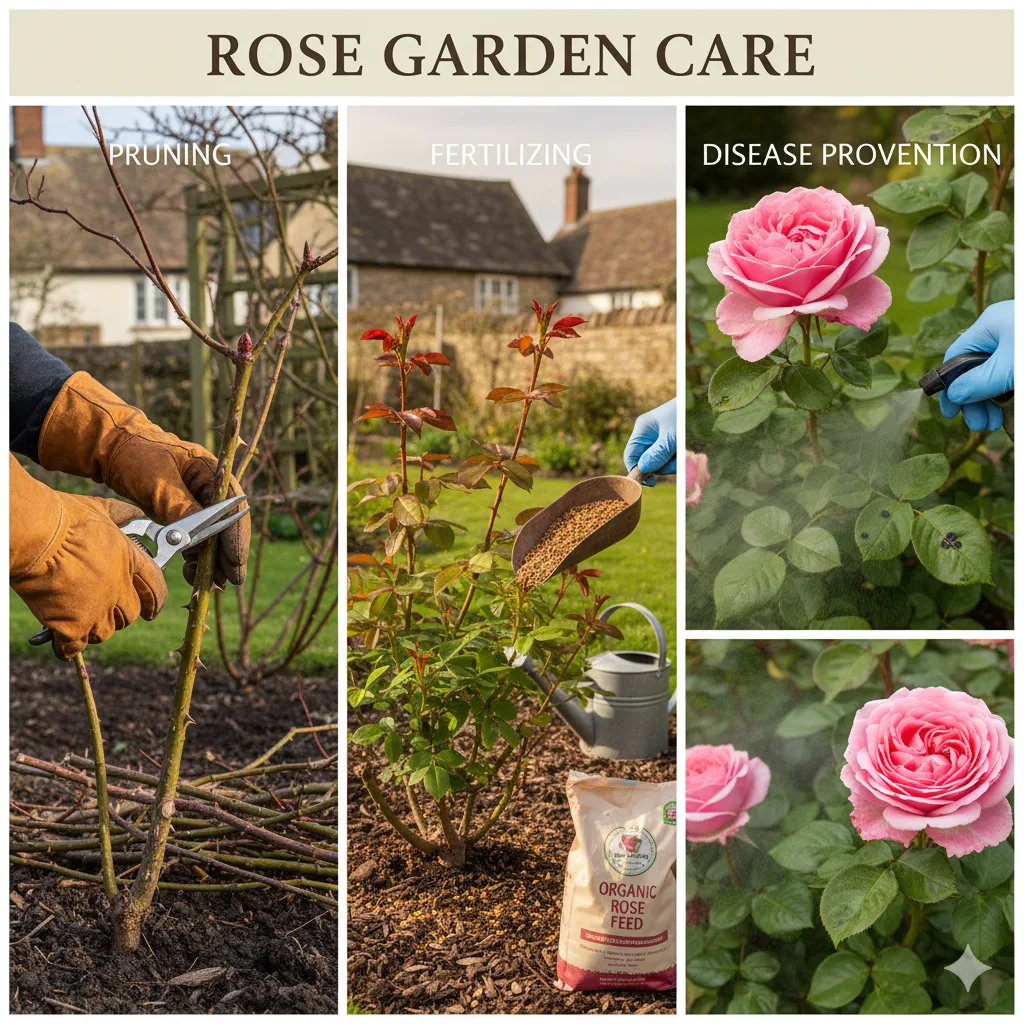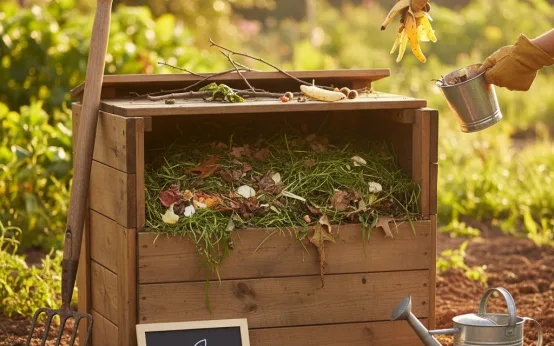
Roses are the quintessential flower of the British garden, symbolising beauty, romance, and tradition. However, maintaining a healthy, vibrant rose bush requires a structured approach, much like managing your finances to avoid unexpected costs. In an era of rising inflation and cost of living concerns, keeping your existing garden assets healthy is more economical than frequently replacing them. A well-maintained rose garden can provide years of stunning blooms without the need for constant trips to the garden centre. This comprehensive guide will demystify the core pillars of rose care—pruning, fertilising, and disease prevention—providing a practical, step-by-step framework tailored for UK gardeners. By following this advice, you will be equipped to ensure your roses not only survive but truly thrive.
The Art and Science of Pruning Your Roses
Pruning is arguably the most crucial task in a rose care calendar. It’s not just about tidying up; it’s a vital process that promotes vigorous growth, better air circulation, and more abundant blooms. Think of it as a form of garden investment, where a short burst of effort in the colder months yields significant returns in summer. The optimal time for major pruning in the UK is late winter, typically from late January to late February, when the plant is dormant and before new growth begins. This is similar to how many financial deadlines, such as the end of the tax year, prompt a period of concentrated action.
Pruning for Health and Structure
Begin by removing any dead, damaged, or diseased wood. These are the plant’s liabilities, and cutting them out prevents the spread of infection. Use clean, sharp secateurs to make a clean cut at a 45-degree angle, just above an outward-facing bud. This angled cut allows water to run off, much like a well-structured savings plan protects against future emergencies. The key is to open up the centre of the bush, creating a ‘goblet’ shape. This improved air flow is essential for preventing fungal diseases, a proactive measure that saves time and money in the long run.
Pruning Specific Rose Types
Different roses require different pruning approaches. For Hybrid Tea and Floribunda roses, aim to remove around half of the plant’s height, leaving 3-5 strong, evenly spaced stems. For Shrub and Climbing roses, the approach is less about severe pruning and more about thinning out old wood and tying in new growth. Consider this the horticultural equivalent of different pension schemes; each one has its own specific rules and benefits that must be understood to get the best outcome. The Royal Horticultural Society (RHS) provides detailed guidance on the specific needs of each rose type.
Feeding Your Roses: The Right Fertiliser Strategy
Fertilising is the process of providing your roses with the essential nutrients they need to produce healthy foliage and spectacular flowers. Without this, your roses can become weak and susceptible to pests and diseases. A fertilising schedule is a bit like a well-managed household budget; consistent, measured applications are far more effective than an ad-hoc, one-off burst. In the UK, the best time to start fertilising is in early spring, just as new growth appears. A second, smaller feed can be given in mid-summer to support the second flush of blooms.
Choosing and Applying Fertiliser
The majority of UK gardeners will find a granular, slow-release rose fertiliser to be the most convenient and effective option. These contain a balanced mix of nitrogen (N), phosphorus (P), and potassium (K), along with trace elements. Look for products with a higher P and K content to promote strong root growth and flowering. As with any regulated product, such as those overseen by the FCA, always follow the manufacturer’s instructions to the letter to avoid ‘burning’ the roots.
For application, sprinkle the granules evenly around the base of the plant, avoiding direct contact with the stem. Gently work the fertiliser into the top layer of the soil and water it in. Organic options, such as well-rotted manure or homemade compost, are also excellent. They improve soil structure over time, providing a benefit similar to the compound interest of an ISA; the long-term gains far outweigh the initial effort.
Proactive Disease Prevention and Pest Control
Disease prevention is the most efficient and cost-effective method of pest and disease control. Treating an established problem, such as black spot or aphids, can be time-consuming and expensive. A preventative approach, like regular health check-ups on the NHS, can save significant trouble later. Common UK rose diseases include black spot, powdery mildew, and rust. These are all fungal diseases that thrive in damp, humid conditions, a frequent occurrence in the British climate.
Preventing Fungal Diseases
The best defence is a good offence. Good air circulation, achieved through proper pruning, is your first line of defence. When watering, aim for the base of the plant and avoid wetting the leaves. Watering in the morning allows any splashes to dry quickly, which helps prevent fungal spores from establishing themselves. A mulch of compost or bark chips around the base of the plant can also help to prevent spores from splashing up from the soil onto the lower leaves. This is a simple, proactive measure that can save you from reaching for costly fungicides later on.
Dealing with Pests
Aphids, or greenflies, are a common nuisance. They are soft-bodied insects that cluster on new growth and flower buds, sucking the sap and weakening the plant. For a small infestation, a strong jet of water from a hosepipe can be surprisingly effective. For larger problems, a solution of water and a few drops of washing-up liquid can be sprayed on the affected areas. This non-toxic, homemade remedy is a practical, budget-conscious approach that aligns with the frugal mindset of many UK households.
What to Do Now: A Rose Care Action Plan
Ensuring your roses flourish is a continuous, year-round effort that requires attention at the right times, much like preparing for your annual tax return. The information presented here should not be seen as a one-off task but as a framework for sustained success. Your next practical step is to audit your garden’s roses. Are they due for a prune? Do they have any signs of disease or pest infestation?
Take a few moments to review the health of each plant. If your roses are healthy, consider stocking up on a suitable fertiliser for the coming growing season. If you spot an issue, such as a black spot on a leaf, take immediate action to remove the affected foliage and dispose of it in your household waste to prevent the spread. By implementing these simple, proactive steps, you are protecting your garden investment and ensuring a magnificent display of blooms for years to come.

 How to Start Composting: A Beginner’s Guide
How to Start Composting: A Beginner’s Guide  Creating Outdoor Room Divisions with Plants
Creating Outdoor Room Divisions with Plants  Modern Minimalist Garden Design
Modern Minimalist Garden Design